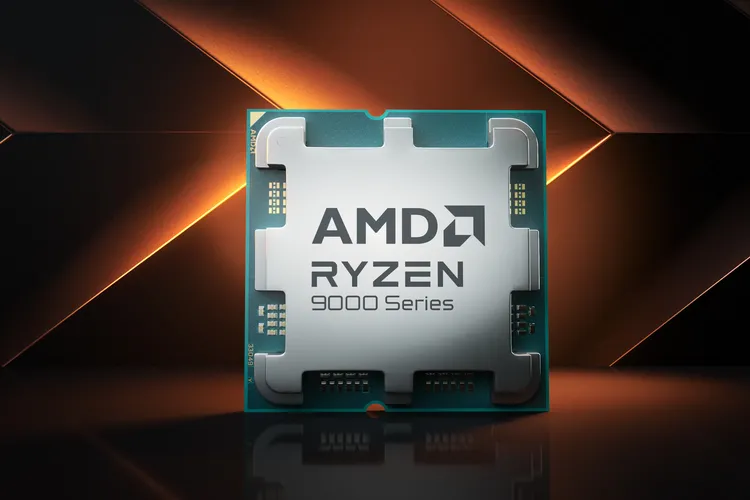Trending Article
AMD’s Ryzen 7 9800X3D: The Next Evolution in Gaming Processors
After weeks of speculation and intrigue, AMD has officially announced the release of its latest processor, the Ryzen 7 9800X3D, set to hit the shelves on November 7th, 2023. Priced at $479, this new CPU is positioned as the direct successor to the highly acclaimed Ryzen 7 7800X3D, which has long been hailed as one of the best gaming CPUs on the market. As we dive deeper into what the 9800X3D has to offer, it’s clear that AMD is raising the bar once again in the competitive world of gaming processors.

Key Features and Specifications
Enhanced Performance
One of the standout features of the Ryzen 7 9800X3D is its increased base clock speed, which now sits at an impressive 4.7GHz. When the workload demands it, the processor can boost up to 5.2GHz. This clock speed improvement is not just a number; it translates into tangible performance gains, particularly in gaming scenarios where every millisecond counts.
Moreover, AMD has also raised the thermal design power (TDP) to 120 watts. This change is particularly interesting as it signals a focus on improving productivity workloads, an area where previous X3D models struggled to keep pace with their non-X3D counterparts. This dual focus on gaming and productivity makes the 9800X3D a versatile option for both gamers and content creators alike.
Gaming Optimization
AMD has labeled the 9800X3D as “the world’s best gaming processor,” and for good reason. The company promises an 8% uplift in average frames per second (FPS) compared to the 7800X3D. This performance boost is largely attributed to two critical advancements: the new Zen 5 architecture and the second generation of 3D V-Cache technology.
The Zen 5 architecture introduces significant optimizations in how data is processed and managed. It allows the CPU to handle complex tasks more efficiently, leading to better gaming performance and responsiveness. Coupled with the second-generation 3D V-Cache, which enhances cache size and access speeds, the 9800X3D is well-equipped to tackle even the most demanding gaming titles.
Competitive Edge Over Intel
AMD is not just focused on maintaining its position; it aims to outpace the competition. The company claims that the 9800X3D will perform up to 20% better than Intel’s latest Core Ultra 9 285K in gaming scenarios. This assertion is backed by a showcase of performance metrics from popular games. For example, during a recent announcement, AMD’s computing and graphics chief, Jack Huynh, highlighted that the new processor outperforms rivals by over 40% in titles like Far Cry 6 and Cyberpunk 2077. These figures underline AMD’s commitment to delivering not just incremental improvements, but significant performance leaps.
The Overclocking Advantage
For hardware enthusiasts, one of the most exciting features of the Ryzen 7 9800X3D is that it is the first X3D processor to be fully unlocked for overclocking. This means that gamers and tech enthusiasts can tweak their systems to extract even more performance. Overclocking has long been a favored method for those looking to push their hardware beyond factory settings, and AMD’s decision to allow this flexibility is likely to resonate well with its core audience.
Real-World Applications
So, what does all this mean for the average gamer or content creator? With the Ryzen 7 9800X3D, users can expect not only improved gaming performance but also enhanced multitasking capabilities. Whether you’re streaming gameplay, editing videos, or running resource-intensive applications, this processor aims to provide a seamless experience.
The potential for overclocking also opens the door for users to customize their performance based on individual needs. Gamers looking to achieve high frame rates in competitive settings can push the limits of this processor, while content creators can utilize the extra power for rendering and processing tasks.
Pricing and Market Position
At a price point of $479, AMD has positioned the 9800X3D competitively against both its previous models and rival offerings from Intel. The Ryzen 7 7800X3D has been a favorite among gamers and PC builders, and the 9800X3D aims to capitalize on this success with enhanced performance and features.
This pricing strategy not only reinforces AMD’s commitment to providing value but also challenges Intel to keep up in a rapidly evolving market. As gaming hardware continues to advance, the stakes are high for both companies, and the Ryzen 7 9800X3D sets a new standard.












Pingback: Unveiling The OnePlus 13 Specification And Price